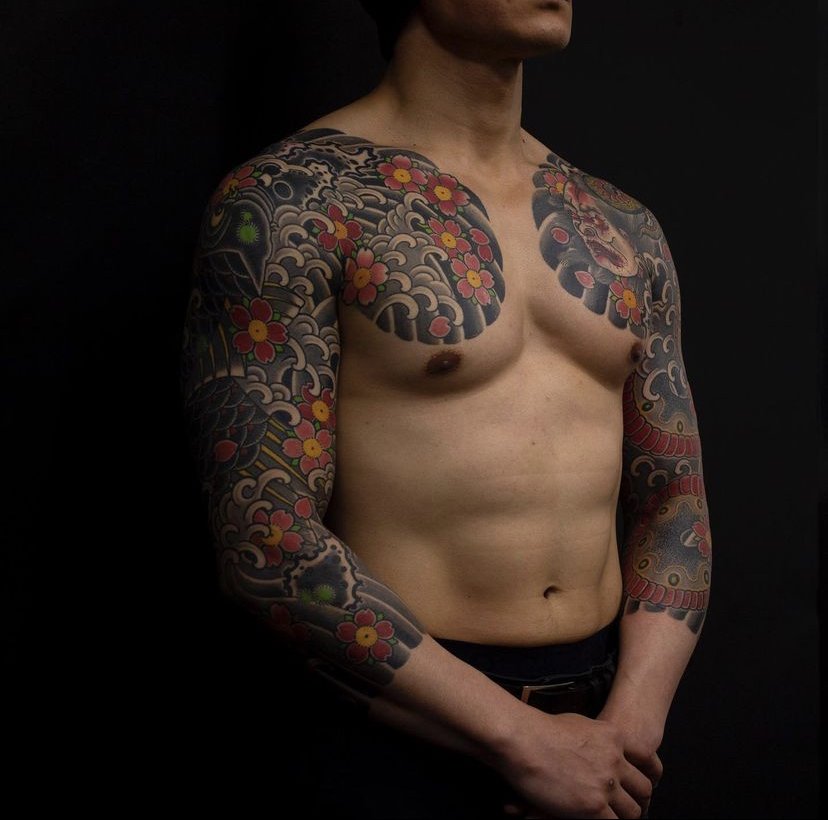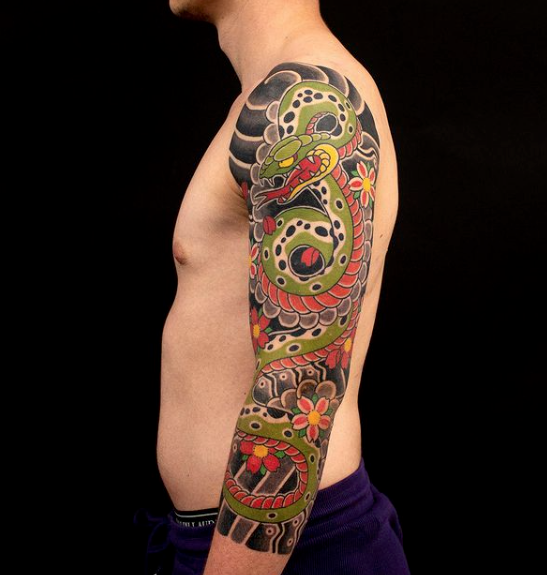Traditional Japanese tattooing is typically created with three main elements, Background or “Gakubori”, the main subject matter, and an often overlooked complimentary floral element.
Floral elements are an important element of Traditional Japanese tattooing. They have a variety of meanings in Japanese culture, and when paired correctly with the right subject matter, they can create a harmonious tattoo rich with history and tradition.
Cherry blossoms or “sakura” represent beauty and the fragility of life in Japanese culture. They are a spring blossom that bloom in abundance throughout Japan and are the centre of their festival culture. Their blossoming period is quite short, and they are susceptible to wind and rain. The flower falls off the tree in full bloom, each perfect and bright petal falling to the ground. The use of this flower in Japanese art or tattoos symbolise the transience of life, and have been often used as a metaphor for a warrior killed early in life. This flower can be paired with most subject matter, but is particularly synonymous with Koi and the traditional folk tale of the koi travelling up a wasteful to become a dragon. Typically signifying triumph over adversity.
Cherry blossoms with Koi and water
Cherry blossoms with snake (hebi)














